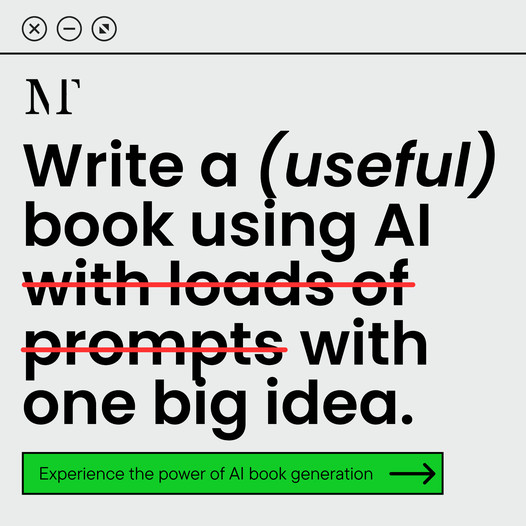Setting the Stage: Nab ‘Em from the Get-Go
You want your story to click with your audience straight away. That very first scene? It’s like the handshake that seals a deal. If folks are hooked right off the bat, they’re more likely to stick around for the journey.
Snagging Interest from the Jump
To grab eyeballs, start with a bang—whether that’s a bold statement, a teaser question, or a bit of action that makes people sit up and take notice. The idea? Leave ’em wanting more. Here are some nifty tricks:
| Technique | What’s It About? |
|---|---|
| Kick Off with Action | Dive into a scene with some action or change to spark curiosity. |
| Make a Bold Claim | Throw out a fact or quote that isn’t the usual run-of-the-mill stuff. |
| Jump into Dialogue | Let a snappy bit of conversation set the stage for your characters. |
Setting the Scene and Vibe
Your opening should also set up the vibe and world of your tale. Whether it’s all fun and games or nail-biting tension, the tone steers the reader’s mood through the entire saga. Use vivid words to craft a setting that swallows readers whole.
To make sure your tone’s spot-on, think about these bits:
| Element | What It Does |
|---|---|
| Word Style | The vocab you pick paints emotions and sets the mood. |
| Juicy Details | Play up sensory details to help folks see and feel the scene. |
| What They Do | Characters’ first moves hint at the emotional backdrop of your yarn. |
Starting with a bang is the ticket if you want to keep readers glued to your pages. Curious about beefing up your narrative mojo? Dive into our guide on boosting your writing game. Nail that opening scene and you’re building on rock-solid ground.
Elements of a Strong Opening Scene
To kick off a story that grabs your readers by the eyeballs and keeps them hooked, you need to throw together a lineup of characters worth caring about, some vivid descriptions to paint the scene, and a juicy bit of conflict. Let’s get into it and make that opening scene unforgettable.
Engaging Characters
Every top-notch story needs characters who can draw readers in and keep them there. Start strong by introducing folks who are relatable or spark curiosity. Here’s how you can make your characters pop right from the start:
| Character Element | Description |
|---|---|
| Relatability | Give your characters emotions or experiences that folks can relate to. |
| Complexity | Let your characters have their quirks or secrets so they feel real and multi-dimensional. |
| Goals | Paint a clear picture of what your characters want—motivation adds life to their journey. |
Looking to dive deeper into crafting characters with punch? Check out the article on how to develop characters in a story.
Evocative Descriptions
Make your setting come alive with descriptions that make your readers feel like they’re right in the thick of things. Here’s how you can write descriptions that draw your audience into your world:
| Description Technique | Example |
|---|---|
| Show, Don’t Just State | Instead of saying someone’s sad, mention their slumped shoulders and the lost look in their eyes. |
| Sensory Details | Pull in all the senses—let readers hear, see, and even smell the story. Capture the creak of floorboards or the scent of rain-soaked earth. |
| Be Specific | Details make all the difference. Swap “the house was old” for “the roof’s sagging shingles drooped like lazy eyelids.” |
If you want to flesh out this skill, peek at the piece on tips for writing descriptive scenes.
 What Poetry Feels Like
What Poetry Feels LikeIntriguing Conflict
A bit of strife or a sticky situation is what keeps folks flipping the pages. Kick things off with a problem, big or small, that your characters have to tackle, and watch your story soar. Explore different types of conflict:
| Conflict Type | Description |
|---|---|
| Internal Conflict | A character tussles with their own feelings, beliefs, or desires. |
| External Conflict | The outside world throws hurdles in the form of nature, society, or other characters. |
| Interpersonal Conflict | Character relationships strain under disagreements, mistrusts, or downright feuds. |
A strong opening should give a glimpse of the main conflict that unravels as the tale progresses. Interested in laying on the tension? Swing by the article on how to build tension in writing.
By weaving together gripping characters, lively descriptions, and engrossing conflict, you’ll nail the opening scene and reel your reader in for the full ride. These essential elements are the secret sauce to setting up a story they’ll savor.
Crafting Immersive Settings
Building a setting that sucks your readers in makes your story pop and keeps them flipping pages. By getting nitty-gritty with details and creating a world that buzzes with life, you’ll hook your audience right from the start.
Creating Vivid Imagery
Pictures in your head, that’s the ticket. You want folks to see what you’re trying to show. When writing the beginning of your story, it’s all about painting that picture with words that hit home. Use lively adjectives and precise nouns to give things depth.
Here’s some stuff you might want to think about:
| Aspect | What’s It Do | Quick Example |
|---|---|---|
| Colors | Stir up different vibes and feelings. | “The deep crimson of the setting sun bled into the sky.” |
| Textures | Make them feel what you describe. | “The rough bark of the gnarled oak scratched her palm.” |
| Movements | Show the world is alive and kicking. | “Leaves danced in the wind, whispering secrets of the forest.” |
| Lighting | Set the mood through light. | “A soft glow illuminated the darkened room, casting shadows like ghosts.” |
Mixing these elements offers a lively backdrop for your characters and pumps life into your story.
Utilizing Sensory Details
Get the readers so wrapped up they can practically touch and smell your story. Play to the big five—sight, sound, smell, taste, and touch—and you’ll whip up a world that’s hard to forget. Sensory punchlines bring out the feels and set the scene.
Here’s how you can wield those senses:
| Sense | How to Use It | Quick Example |
|---|---|---|
| Sight | Paint pictures with your words. | “The shimmering lake mirrored the vibrant hues of dusk.” |
| Sound | Add sounds that pop with onomatopoeia. | “The crackle of twigs underfoot echoed eerily in the stillness.” |
| Smell | Bring memories or set a scene with smells. | “The sweet aroma of blooming jasmine filled the air, inviting comfort.” |
| Taste | Use flavors to evoke past times or longings. | “The tangy zest of the citrus burst on her tongue, energizing her.” |
| Touch | Get feelings across with physical sensations. | “The icy breeze enveloped her, a chilling reminder of the winter ahead.” |
Sensory details make your setting pop like 3D—it’s live and up close. This keeps readers locked in, playing out the story in their mind’s eye.
As you sharpen your writing chops, keep reaching for new ways to shape those killer scenes. If you’re hungry for more tips, head over to how to improve writing skills. Bring these techniques into your writing kit to make sure your opening scene ropes in readers and sets the tone for the adventure to follow.
Techniques for a Compelling Start
Grabbing attention right off the bat is key when kicking off your story. Knowing the tricks of the trade makes that first scene pop. Here’s the rundown on some killer ways to get sucked into your narrative: fast-paced beginnings, snappy dialogue, and nostalgic glimpses from the past or hints of what’s to come.
Action-Packed Openings
Dive straight into the heart-pounding stuff, and you’re more likely to get readers hooked in no time. This approach sets a vibrant pace and stirs curiosity about what’s unfolding, making readers eager to turn the page. Action isn’t just a flurry of fists; it can tug at the heartstrings or challenge the mind, too.
Imagine setting your first paragraph around a significant happening that makes readers sit up. Like:
- Kicking Off Chaos: Throw your main character into a major plot twist right away.
- Keep It Active: Active sentences crank up the vibe of urgency and immediacy.
Here’s a peek at some mind-spinning action starters you might consider:
| Type of Action Opening | Example |
|---|---|
| Physical tussle | Someone leaps to dodge a thing thrown at them. |
| Emotional bomb | In a crowd, someone learns life-altering news. |
| Race against time | Someone’s racing to beat the clock on something critical. |
Dialogue Hooks
Who can resist a spicy conversation, right? Jumping into dialogue can be a surefire way to stir curiosity. Smart exchanges not only paint a picture but also push the plot.
Think about these pointers when crafting dialogue:
- Kickstart with a Clash: Begin with folks not seeing eye-to-eye or with a heated chat.
- Distinctive Voices: Let every word spoken by your characters speak their essence.
Check out this attention-grabber:
- “You’re kidding! After all we’ve been through, you’re leaving?”
There’s tension right off the bat, making readers eager to know what led here.
Flashbacks and Foreshadowing
Using throwbacks or sneak peeks of what’s up ahead spices up your opener. Flashbacks give backstory, and foreshadowing plants clues for future twists.
For flashbacks, bear these in mind:
- Swift Shifts: Move smoothly between now and then.
- Connect the Dots: Make these blasts from the past relevant to what’s happening now.
Foreshadowing? Subtle but effective. It slips into the tale and, when the penny drops, adds that “aha!” moment.
Combining Techniques
Mix and match for a richer start. Imagine kickstarting with some action, then slipping in a bit of dialogue. Just like that, you’ve woven a catchy opening tapestry.
Play around with these methods, and see what gels with your story style. Get your opening scene just right, and you set the tone for an unforgettable tale. For more tips on sprucing up your writing game, check out our guide on how to improve writing skills.
Keeping the Ball Rolling
When you’re spinning your tale, it’s like riding a bike downhill—you want to keep that energy going to make sure your readers stay glued to the page. Two big things that help with this are creating tension and making sure everything moves along smoothly.
Stirring Up Some Tension
Tension is what gets folks biting their nails and flipping pages. You ramp up tension by tossing in high stakes, conflicts, and challenges that characters have to navigate. Let’s break it down:
| Ingredient | What It’s About |
|---|---|
| What’s At Stake | Lay out what your characters stand to lose. More on the line equals more tension. |
| The Drama | Mix in a cocktail of personal and external conflicts to spice things up. |
| What’s Next? | Keep the audience on their toes with surprises and unclear situations. |
| Timing’s Everything | Drag things out a bit to build up the suspense. |
When your characters are neck-deep in all sorts of trouble or heavy decisions, things get intense, making your readers more emotionally invested. Need more juice on this? Check out how to build tension in writing for some cool tips.
Getting the Pace Just Right
Pacing is your story’s heartbeat—it decides if it’s a sprint or a leisurely stroll. The trick is to blend action with more relaxed, detail-rich moments to keep your readers hooked. Here’s how you can do that:
- Mix Up Sentence Lengths: Short for the adrenaline rush, long for the introspection—find your rhythm here.
- Keep Secrets, Then Spill Them: Drop bits of info as you go to keep the curiosity piqued instead of dumping everything all at once.
- Trim the Fat: Cut out the pointless stuff so your readers stay zeroed in.
- Smooth as Silk: Transition from one scene to the next like peanut butter on bread to give your readers a nice, flowing journey.
Rock these tips, and you’ll have a gripping story that won’t let readers go. For more pointers, swing by our piece on how to improve writing skills, packed with ways to make your pacing and storytelling top-notch.
Editing Your Opening Scene
Editing’s like the secret sauce to making your opening scene a real page-turner. Get this part right and your readers are hooked! So, let’s talk about giving your prose a spit-shine and asking for some honest opinions to make that first impression pop.
Polishing Your Prose
Don’t be afraid to go in there with a red pen! Make it clean, make it mean, and use words that pack a punch. Check out these tips:
| Aspect | Tips |
|---|---|
| Clarity | Chop out the clutter that’ll fog up your message. Speak plain and simple. |
| Conciseness | Ditch the fluff; every line should earn its keep. |
| Word Choice | Grab some zippy verbs and vivid nouns—paint a picture with your words. |
| Sentence Structure | Mix it up with short and snappy or long and lyrical for flow. |
If you’re feeling stuck, our how to edit your own writing guide might give you a nudge in the right direction.
Seeking Feedback
Sometimes, you gotta step back and let others weigh in. Peer feedback can be a real game-changer. Here’s how to go about it:
| Method | Description |
|---|---|
| Writing Groups | Join a band of writers for feedback and camaraderie. |
| Beta Readers | Find folks who jive with your style to get the inside scoop. |
| Online Forums | Toss your scene to the internet and see what comes back. |
Once the critiques roll in, take a look at what makes sense and tweak your work. If you’re thirsty for more ways to beef up your writing chops, take a peek at how to improve writing skills.
By giving your prose a good polish and soaking up some solid feedback, your opening scene can dazzle and draw in readers like bees to honey.

 Grab my poetry book, 'we're all just wanderers in the end' Here
Grab my poetry book, 'we're all just wanderers in the end' Here AD: Your Book Finally Written...
AD: Your Book Finally Written...